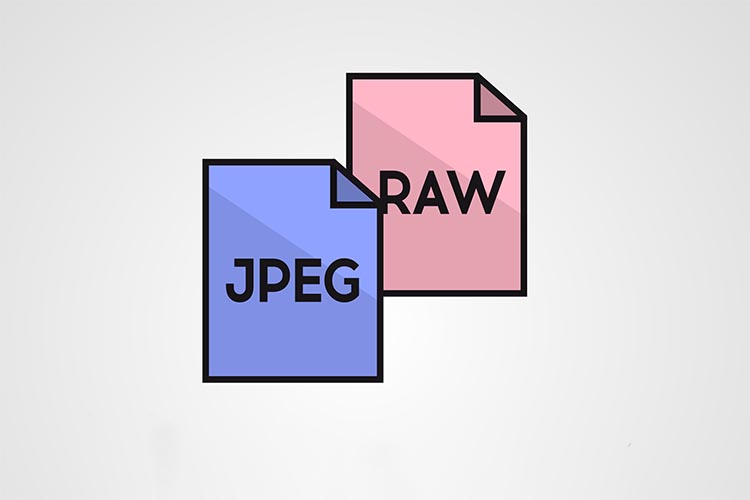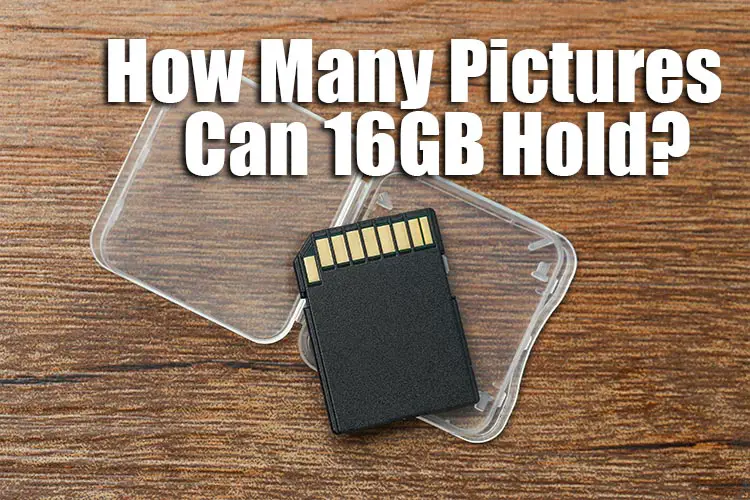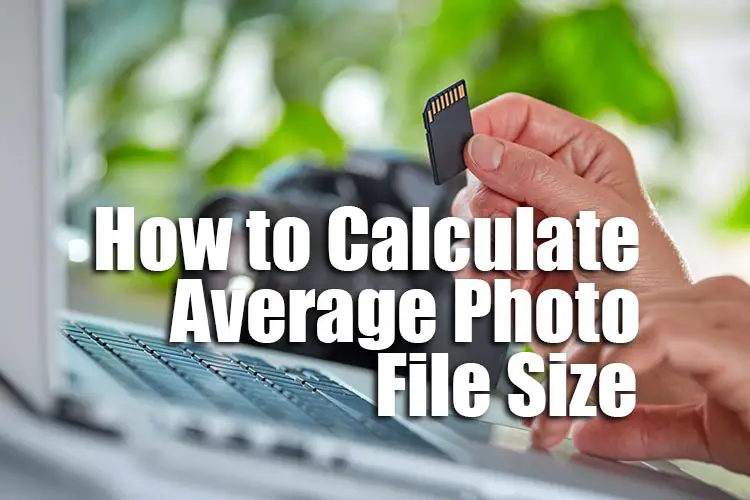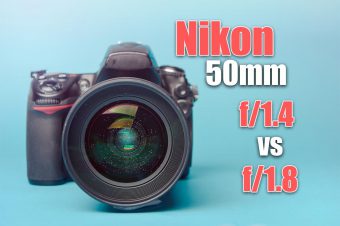In basic terms, a 16GB SD card can hold between approximately 300 to 2200 pictures, depending on the factors that are explored below.
Knowing the capacity of your memory card isn’t much of use if you don’t have an idea of how many images will fit in it. And, trust me, you don’t want to run out of space unexpectedly— especially when traveling!
Depending on what you want to do, 16GB may be too much or too little space. But, to figure out how many photos can 16GB hold, you have to consider several aspects.
That is why, in this post, I’ll share some things I’ve learned over the years to determine the number of pictures you can store on your 16GB card.
To begin with, let’s talk about file size.
What affects photo file size?
First of all, there is no standard size for an image file. That number can vary a lot depending on three aspects: camera resolution, photo file format, and shooting settings.
Camera Resolution
Camera resolution refers to the number of megapixels your camera can capture. The more megapixels, the more detail in your images, but the larger the file size.
Most modern cameras have something between 15 and 40 megapixels. And, as technology evolves, having more megapixels in hand is becoming more and more common. That is something to consider if you shoot with multiple cameras.
Camera Photo File Format
This one is probably the most relevant factor to determine how many photos does 16GB hold, as it implies a significant difference in file size.
Depending on the purpose you have for your photos, you can shoot either in RAW or JPEG format. What’s more, you can select the compression level of JPEG images.
But what does that mean in practical terms?
Let’s get into more details:
RAW vs. JPEG

As the name implies, RAW files contain all the unprocessed data captured by the sensor. They are like the digital version of film negatives.
Shooting in RAW format will give you more flexibility in editing because you’ll have more information to work with. In other words, you can alter exposure, contrast, and color without losing image quality.
However, RAW files will consume more space on your memory card— think something between 20 and 45MB per photo. Besides, you will need specialized photo editing software that can process them.
In contrast, JPEGs are universal. This format is much friendlier and easier to handle and share.
Keep in mind that JPEG files are compressed images, meaning that they only retain some information from the original shot. That reduces the file size considerably but results in a data loss that can limit you a lot in post-processing.
JPEG Quality Settings
Digital cameras allow you to choose various compression/quality levels when shooting in JPEG format. That is incredibly useful for documenting personal stuff like family gatherings or trips where your focus is not on the best possible image quality, but instead on saving space to record more memories.
Of course, the higher the image compression, the smaller the file size. Still, even the highest quality JPEG is significantly lighter than a RAW file— usually 2-4 times smaller.
ISO and noise
High ISO will increase both the noise and the file size of your photos. That happens because the image compression algorithm works by grouping similar patterns within a photograph. Therefore, when there is excess noise, these patterns lose consistency due to the grain in the image, making compression more difficult.
How many pictures can 16GB hold?

As you see, many variables play a crucial role in the size of your files. Thus, it is impossible to know exactly how many pictures will 16GB hold.
Even so, you can calculate an estimate based on all of the above factors— more on that later.
However, bear in mind that the real capacity of your memory card will be a bit lower than advertised.
The thing is that memory card manufacturers express storage capacity in the decimal system —which is the one we humans use— but computers work with the binary system. So, when making the conversion between both systems, there is a loss of megabytes in the process.
For that reason, a 16GB memory card will have an actual capacity of something around 14-15GB.
To give you a quick reference of how many pics you can store in that space, here is a size comparison table with different cameras and formats:
How many RAW photos can 16GB hold?
| Canon EOS R5 (45MP) | Canon EOS 4000D (18MP) | Sony A7III (24.2MP) | Nikon Z 7II (45.7MP) | |
| Average RAW file size | 45.4 MB1 | 24.5 MB2 | 47.3 MB3 | 47.3 MB4 |
| Possible RAW shots (approx.) | 308 | 571 | 295 | 295 |
1: File size information according to the Canon EOS R5 user manual. Canon uses lossless compression on their RAW files to reduce file size without losing data.
2: File size information according to the Canon EOS 4000D user manual. Canon uses lossless compression on their RAW files to reduce file size without losing data.
3: File size for uncompressed 14-bit RAW files according to The Digital Picture’s Sony A7III Review. The file size remains consistent throughout the ISO range, hence the high number. The average file size for compressed RAWs is about 23.8 MB.
4: File size for lossless compressed 14-bit RAW files according to the Nikon Z 7II user manual.
How many JPEG photos can 16GB hold?
| Canon EOS R5 (45MP) | Canon EOS 4000D (18MP) | Sony A7III (24.2MP) | Nikon Z 7II (45.7MP) | |
| Average high-quality JPEG file size | 13.5 MB1 | 6.4 MB2 | 12 MB3 | 15.7 MB4 |
| Average medium-quality JPEG file size | 7.8 MB1 | 3.4 MB2 | 6.5 MB3 | 11.2 MB4 |
| Average low-quality JPEG file size | 4.7 MB1 | 2.2 MB2 | 4 MB3 | 3.3 MB4 |
| Possible shots for highest JPEG quality settings (approx.) | 1037 | 2187 | 1166 | 892 |
1: File size information according to the Canon EOS R5 user manual.
2: File size information according to the Canon EOS 4000D user manual.
3: File size information according to Photography Blog’s Sony A7III Review.
4: File size information according to the Nikon Z 7II user manual.
How to calculate the average photo file size of your camera?

If you want to know how many pictures can a 16GB SD card hold in your camera, follow these steps:
- Take two photos with the usual RAW/JPEG settings you use: one at the lowest ISO setting, underexposed by 1 stop, and the other at the highest ISO setting, also underexposed by 1 stop. Both images must be of a uniform scene like a wall.
- Repeat that process twice, but this time, take the pictures with correct exposure first and then overexposed by 1 stop. In the end, you should have six photos.
- Add the different file sizes together and then divide by six.
Voilà! Now, you have the average file size of your camera in MB.
The only thing left to do now is to divide the capacity of your memory card by the average file size of your camera. Remember that a 16GB card will have around 14-15GB of actual space, and there are 1000MB in each GB— meaning that 14GB equals 14,000MB. Take that number into account when you do the math.
For a table of different memory card capacity for multiple file sizes, take a look at the article on how many pictures per GB.
Choosing the best SD card for you
When it comes to buying a new SD card, storage capacity is not everything. So, if you are curious about what other aspects you should consider, check out this article on which is the best SD card.
Read More:
How many pictures can 32GB hold?
How much 4K video can 128GB hold?






Leave a Reply